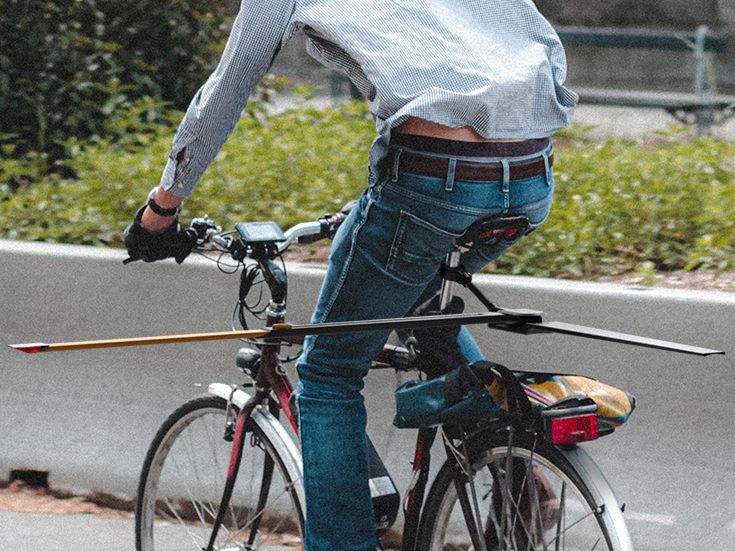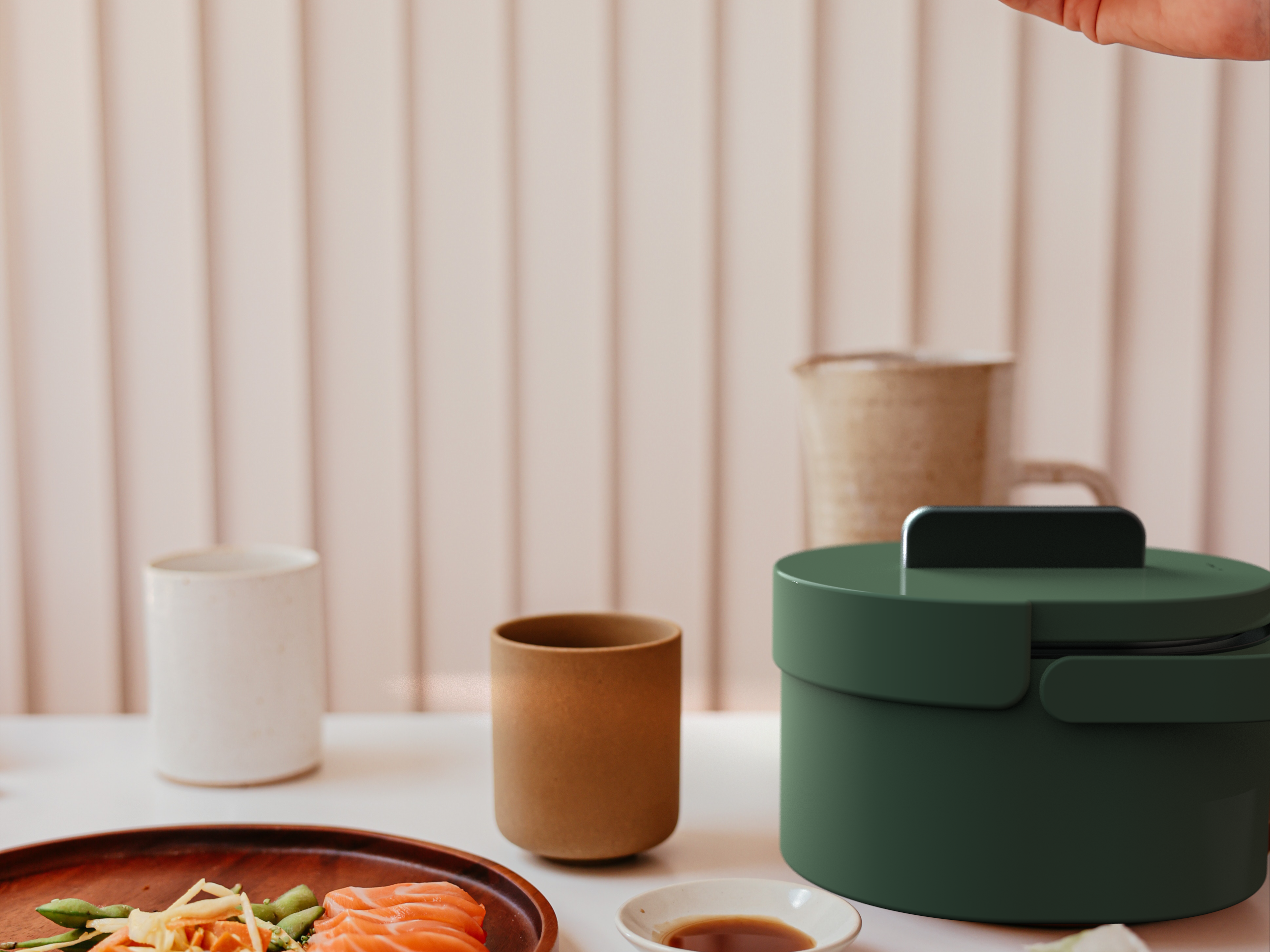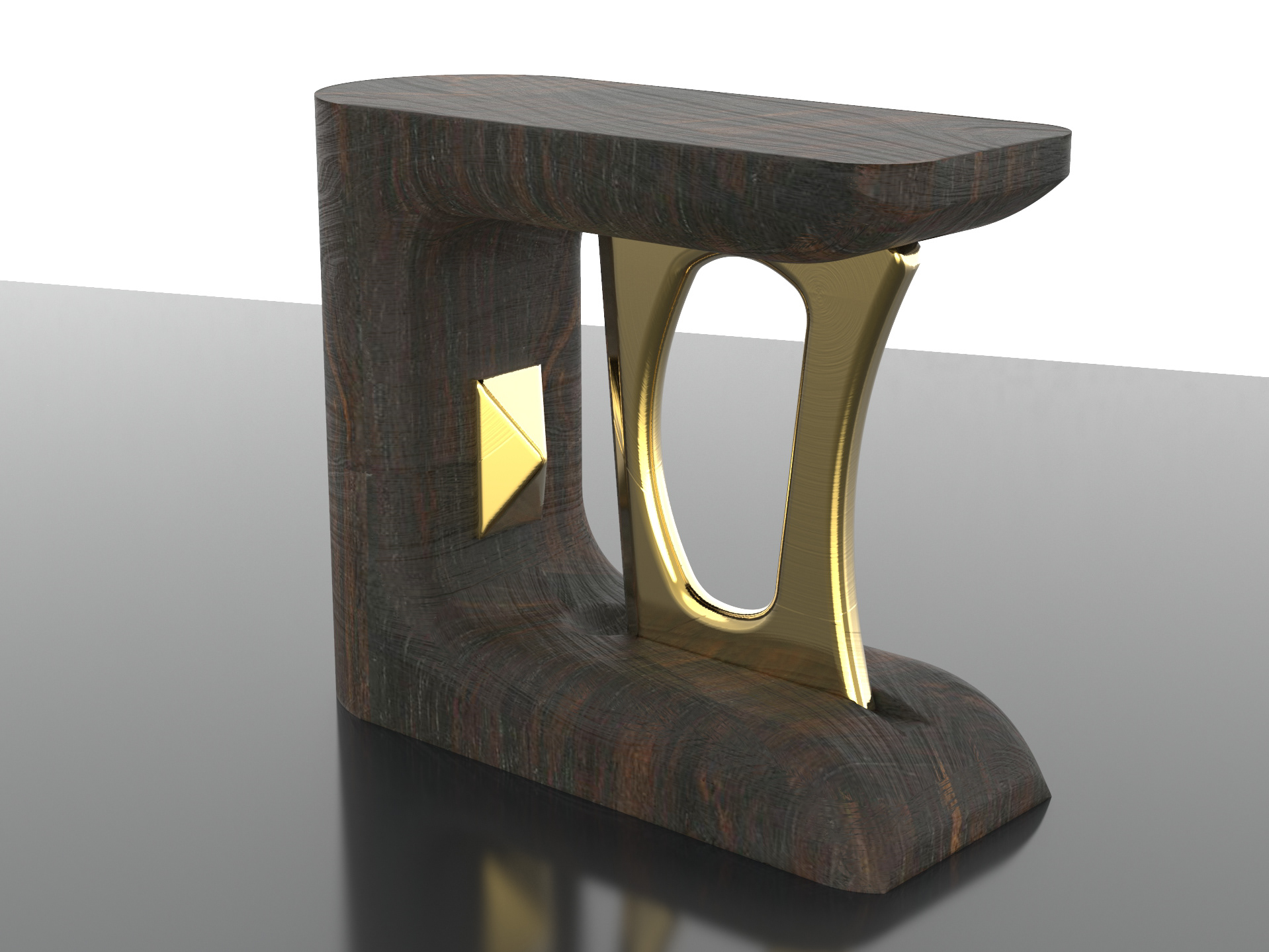project summary
Clutter is a typical household problem. Whereas organizers and furniture solutions exist, there remains an opportunity to identify problems and design unique solutions which are not just functional, but also add value through good design
For this project, a physical prototype was required. The design needed to use only flat-stock materials which can be processed flat or formed into shape at manufacture (e.g. bent sheet metal or plastic)
Project Duration: January- February 2020
Key Skills used: Research, Concept sketching, Presentations, Metal working
Key Apps used: Miro, Photoshop, Illustrator, Indesign, Solidworks
the problem
In a shared house, organizing items for various people in one spot can be difficult. This remains true for cutlery, where the inhabitants tend to want to have, use and identify their own cutlery easily after leaving them in the drainer.
With the current solutions for cutlery drainers, a few pain points were found:
- Hard to differentiate personal Items due to concealed handles, especially when full.
- Sharp points stick out unpredictably, increasing injury risks.
- The base gets dirty quickly and is difficult to clean.
- Very clustered and disorganized when full.
- Sharp points stick out unpredictably, increasing injury risks.
- The base gets dirty quickly and is difficult to clean.
- Very clustered and disorganized when full.
Existing Products work similarly but have the same problems in shared homes/ spaces
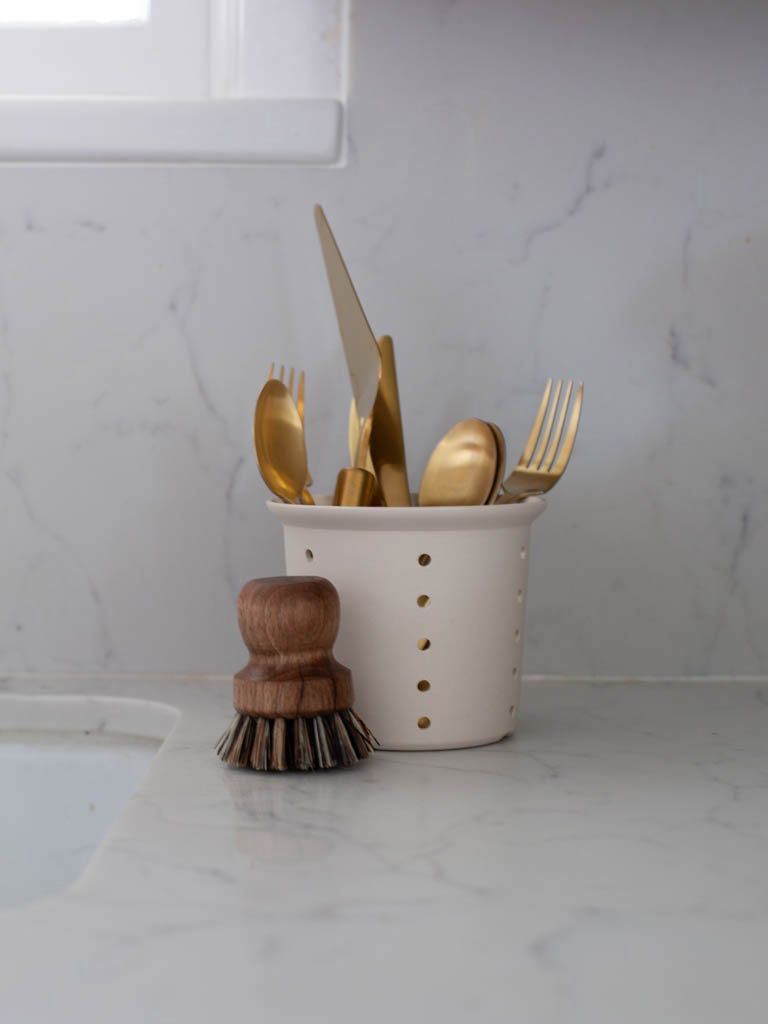
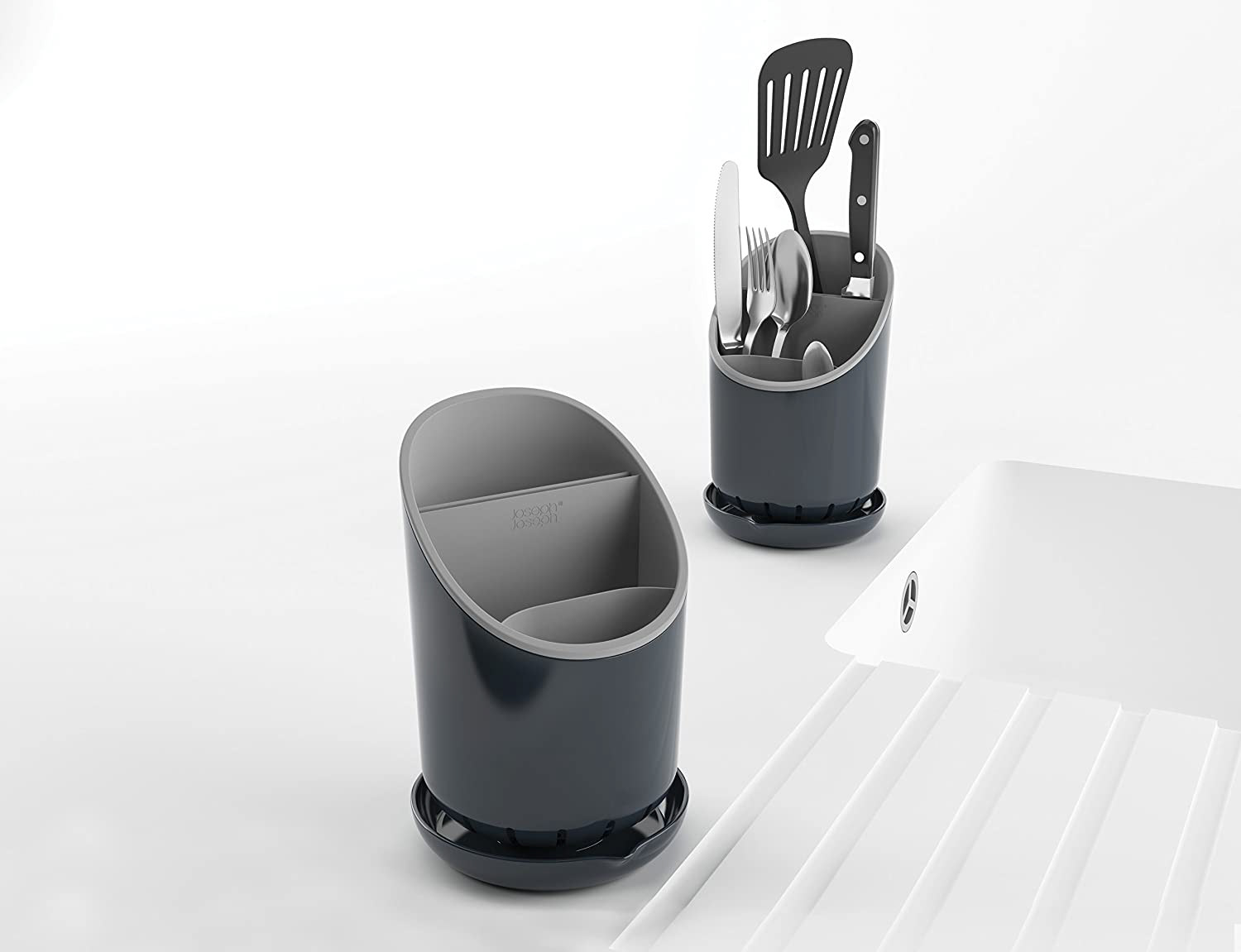
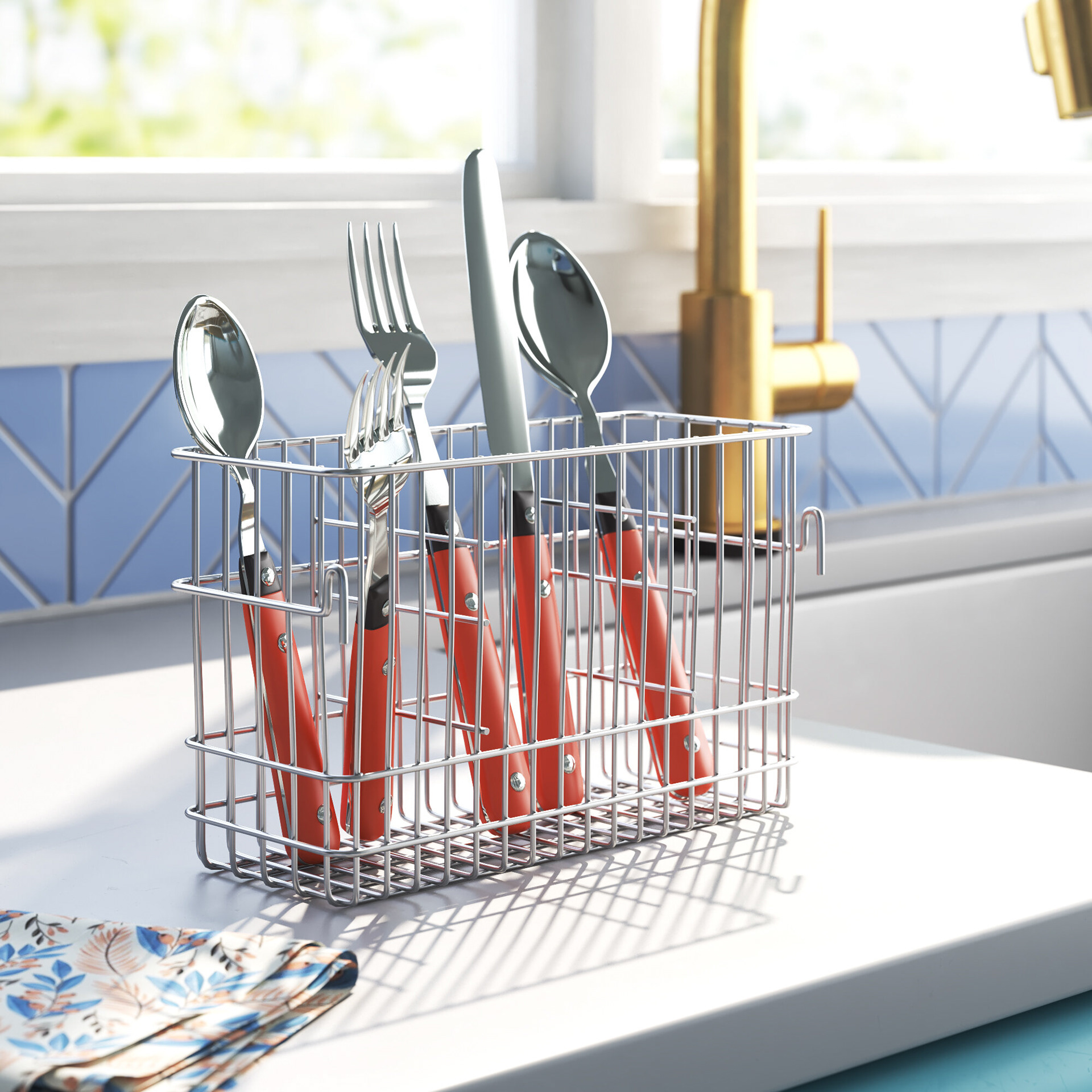
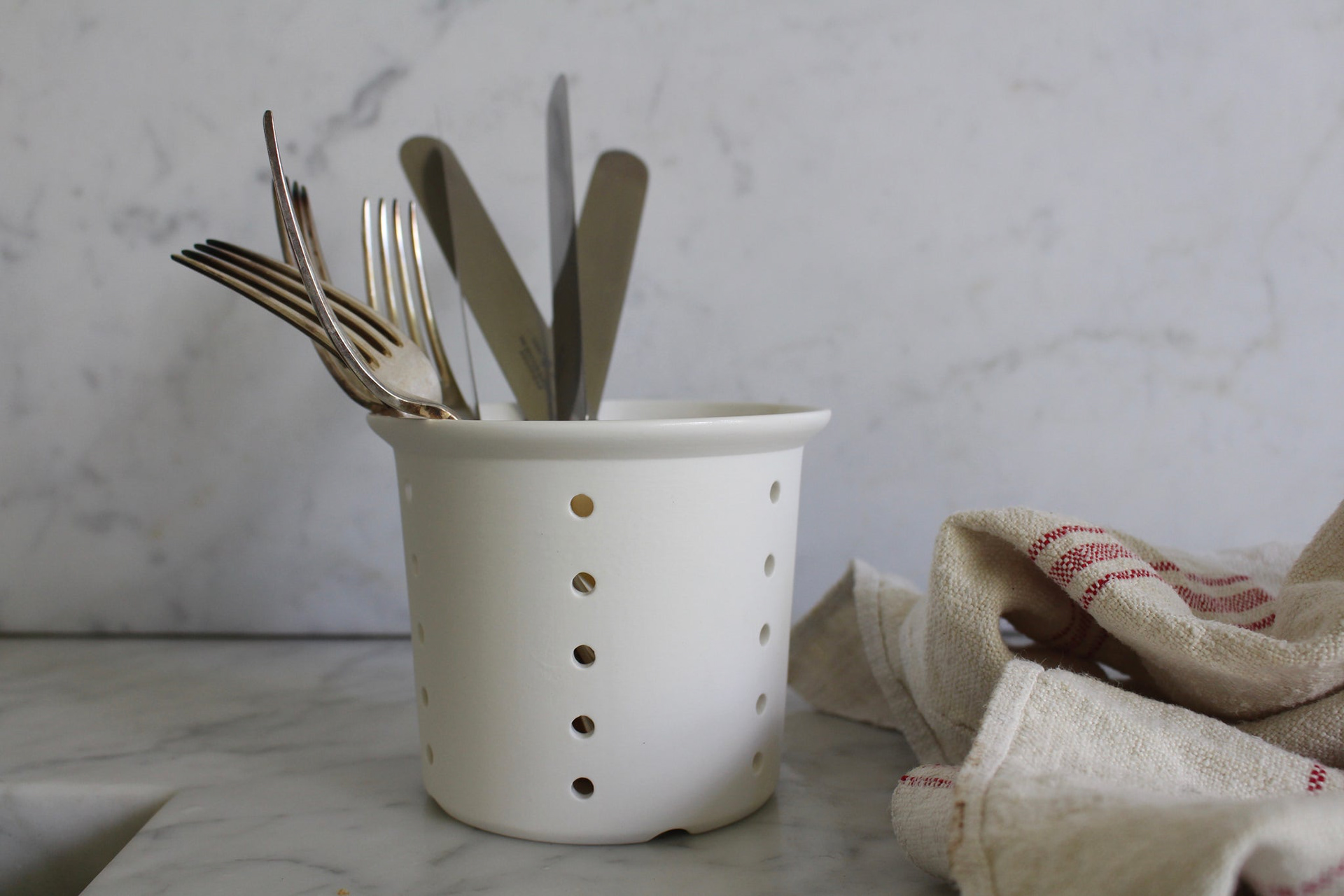
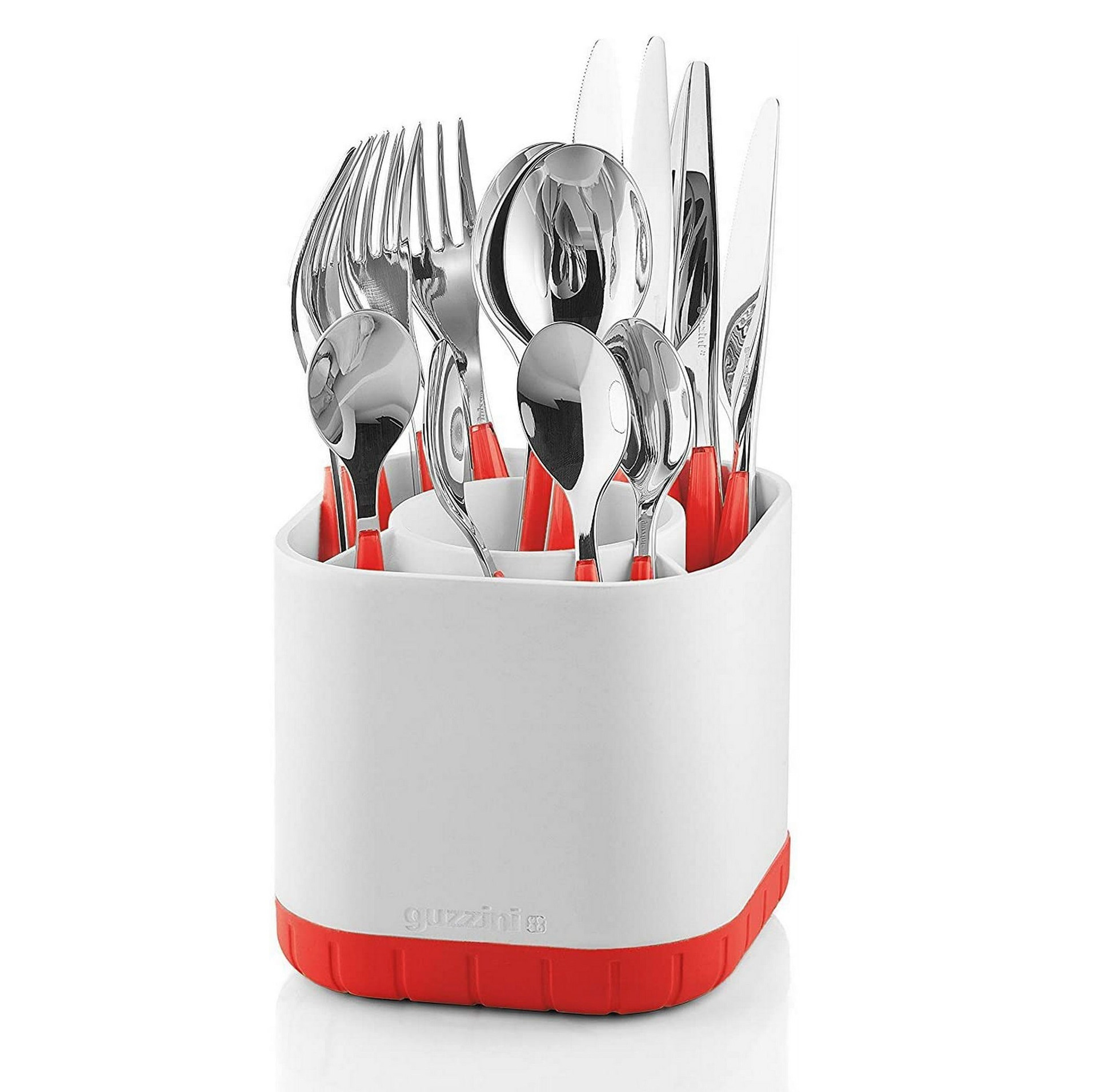
the goal
After analyzing the problems, I came up with a simple specification for the product to meet that would solve the pain points identified:
- Should hold at least 30 pieces of cutlery, enough for multiple peoples' sets
- Should separate or allow easy identification of 3 individuals' cutlery
- Should be easy to access one handed to allow easy loading during washing.
- Should keep area neat and organised when full.
- Should separate or allow easy identification of 3 individuals' cutlery
- Should be easy to access one handed to allow easy loading during washing.
- Should keep area neat and organised when full.
Ideation
I brainstormed concepts addressing the various problems found, and ways to improve the current draining system. The main takeaway from this, was the idea that the cutlery of individuals could be organized into different rows. An idea also popped up to have a separate compartment to encourage users to consistently unload dry cutlery and put them away, reducing the chances of clutter.
storage system Ideation
Using more sketches, I brainstormed various methods of holding cutlery to allow easy access and storage. Doing this allowed me to move on to test some of these and evaluate how fit they were for the task.
Testing and development
Cardboard was used to test and evaluate the ideas sketched, to find the best way to hold and access cutlery. This is an ideal material because it matches the sheet material requirement, and is inexpensive.
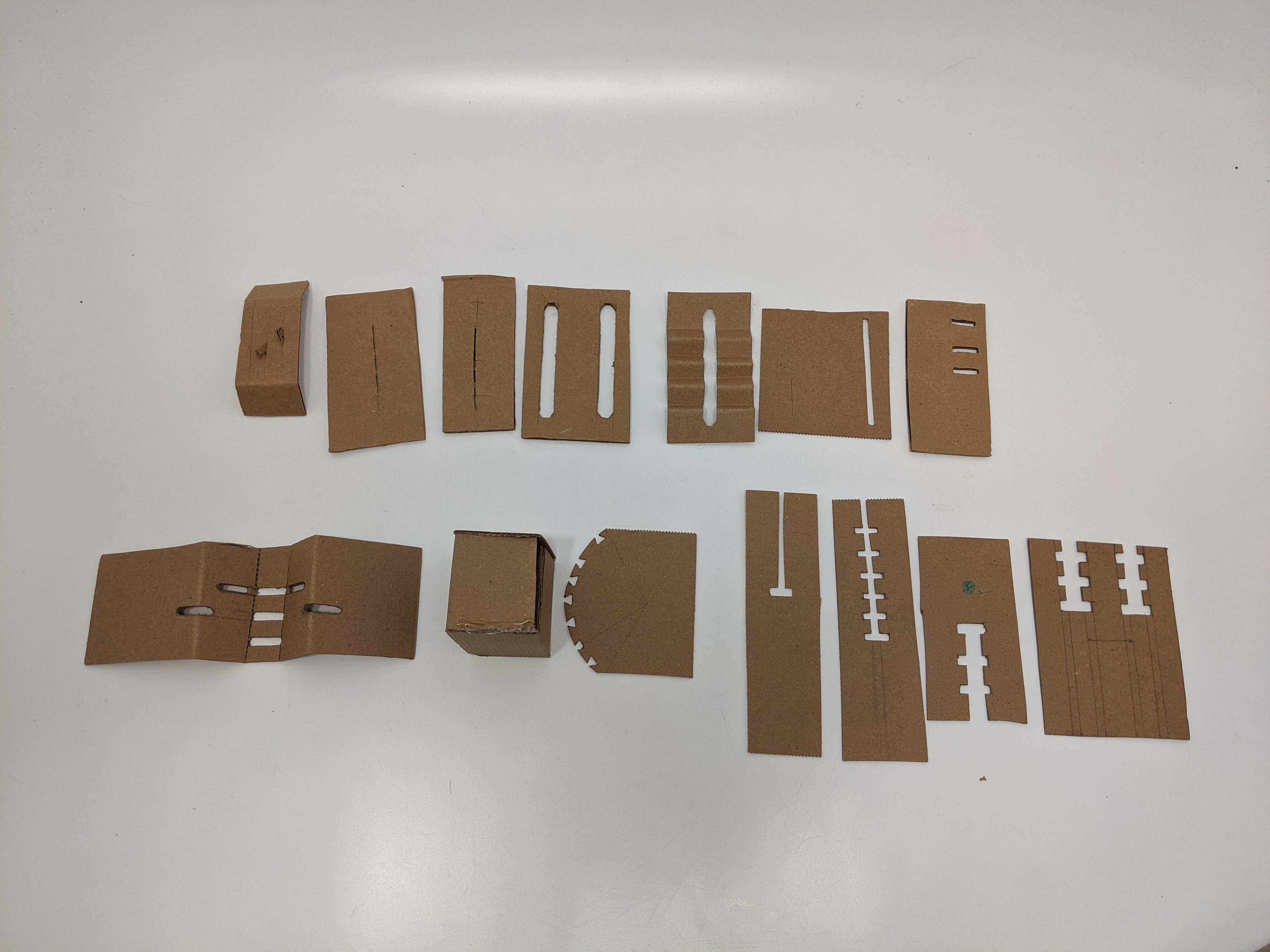
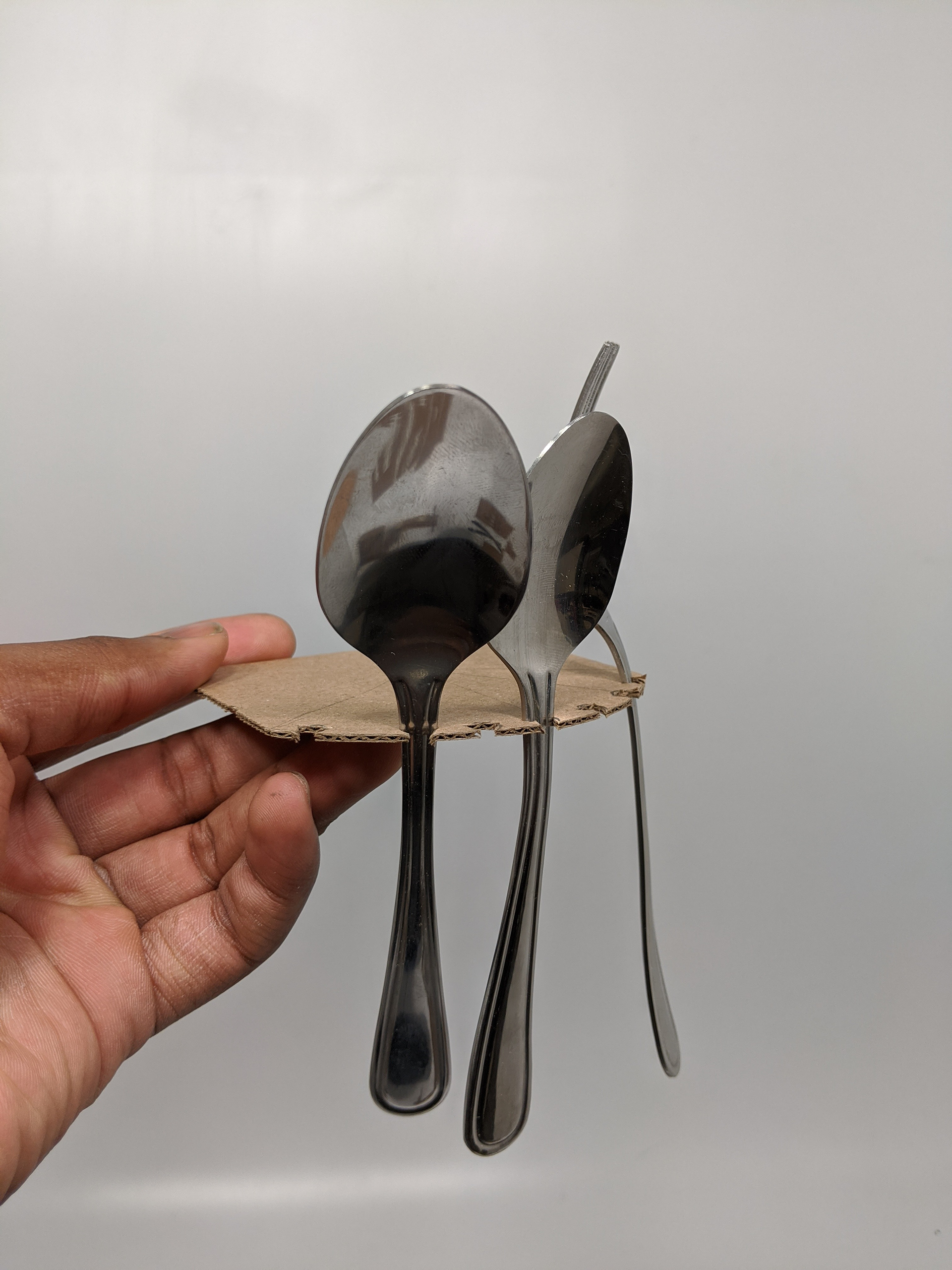
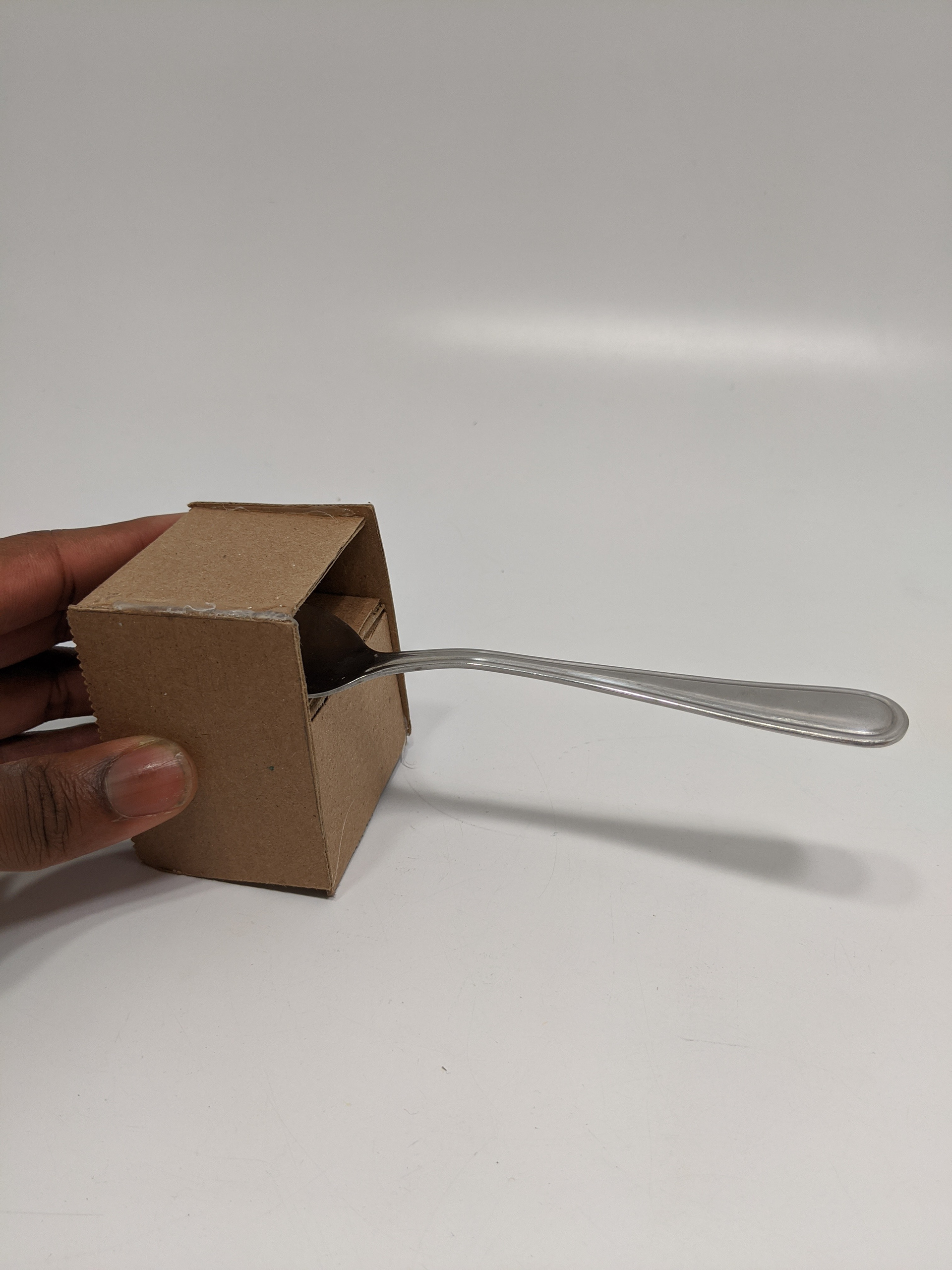
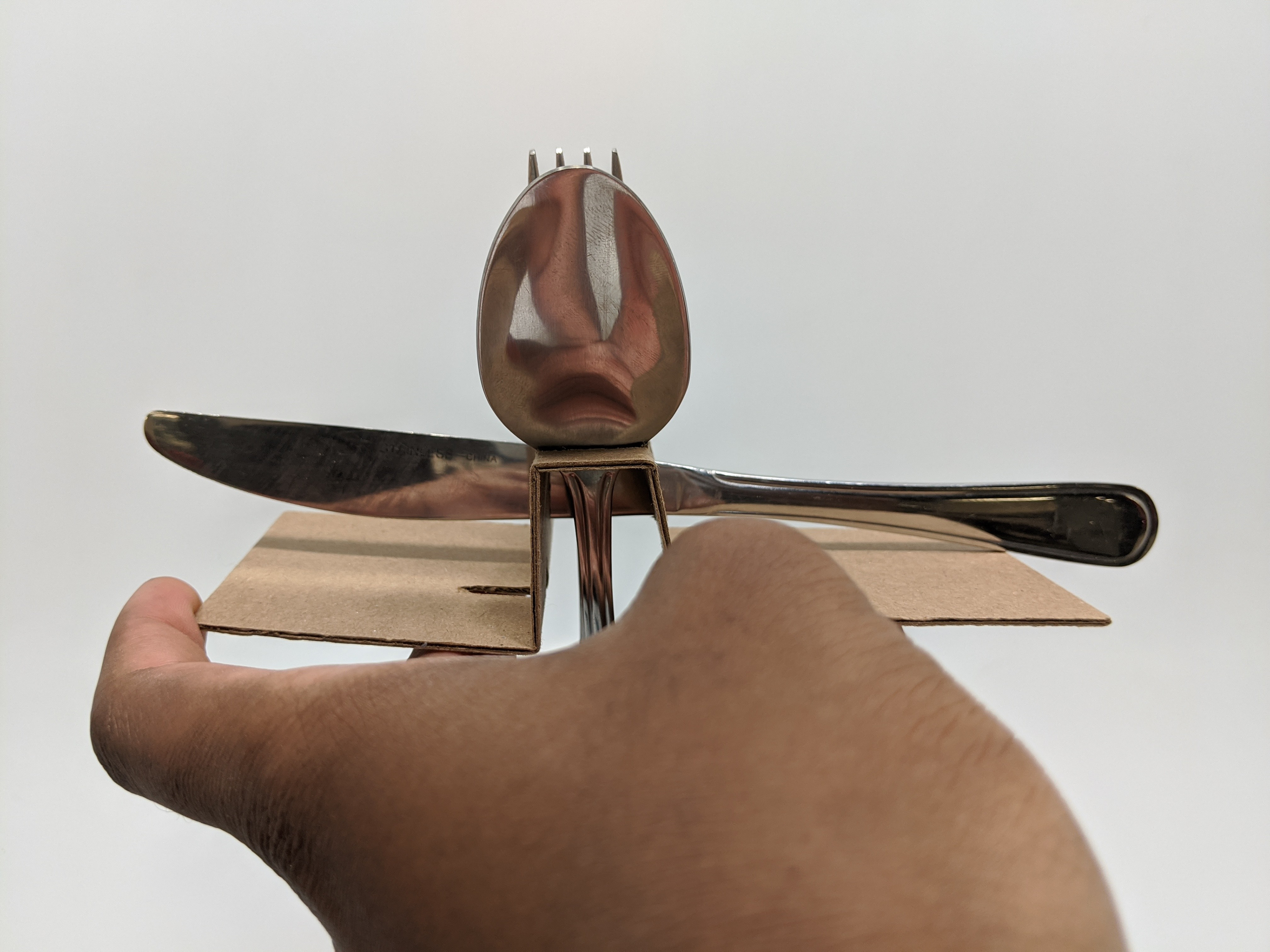
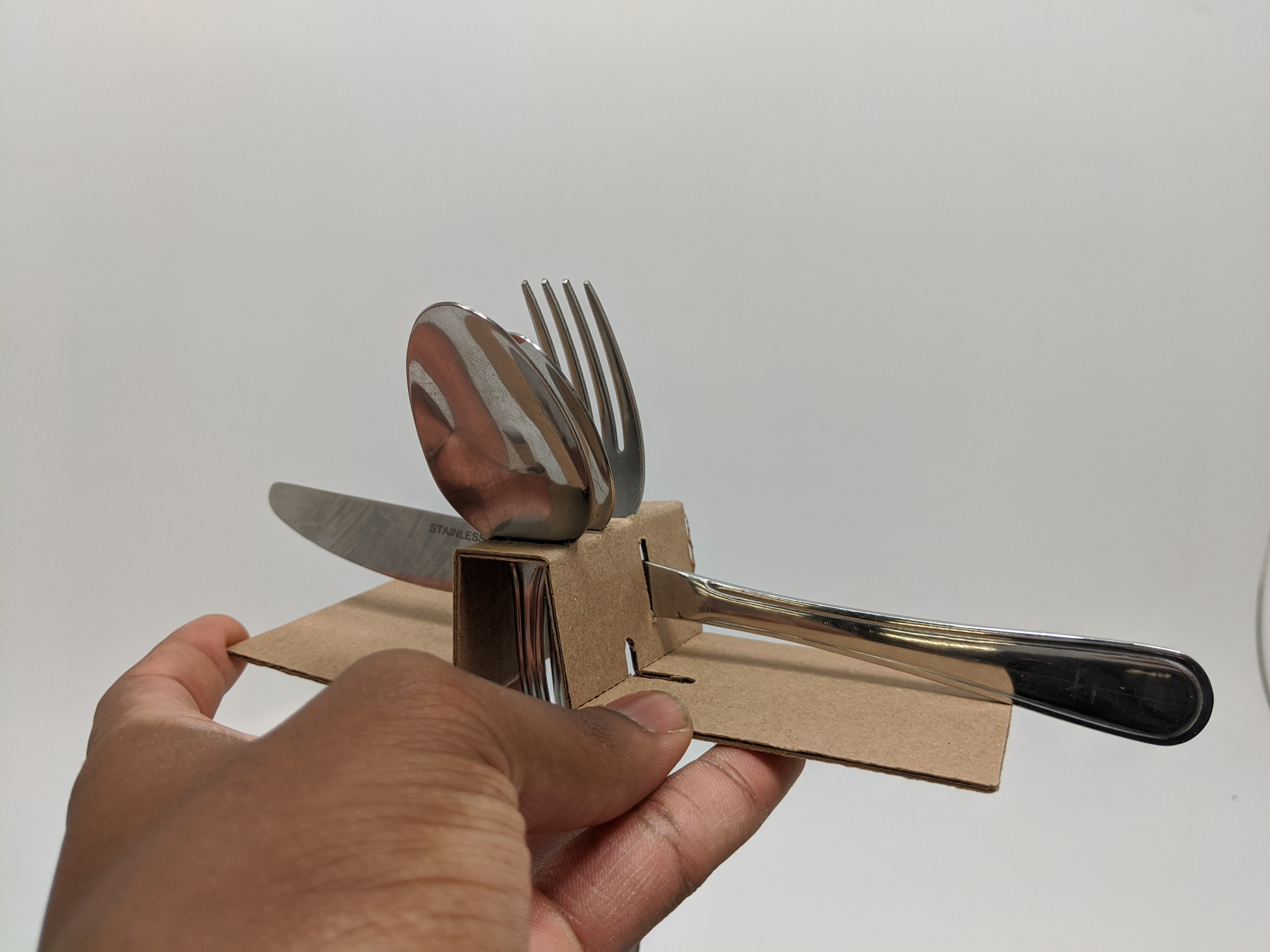
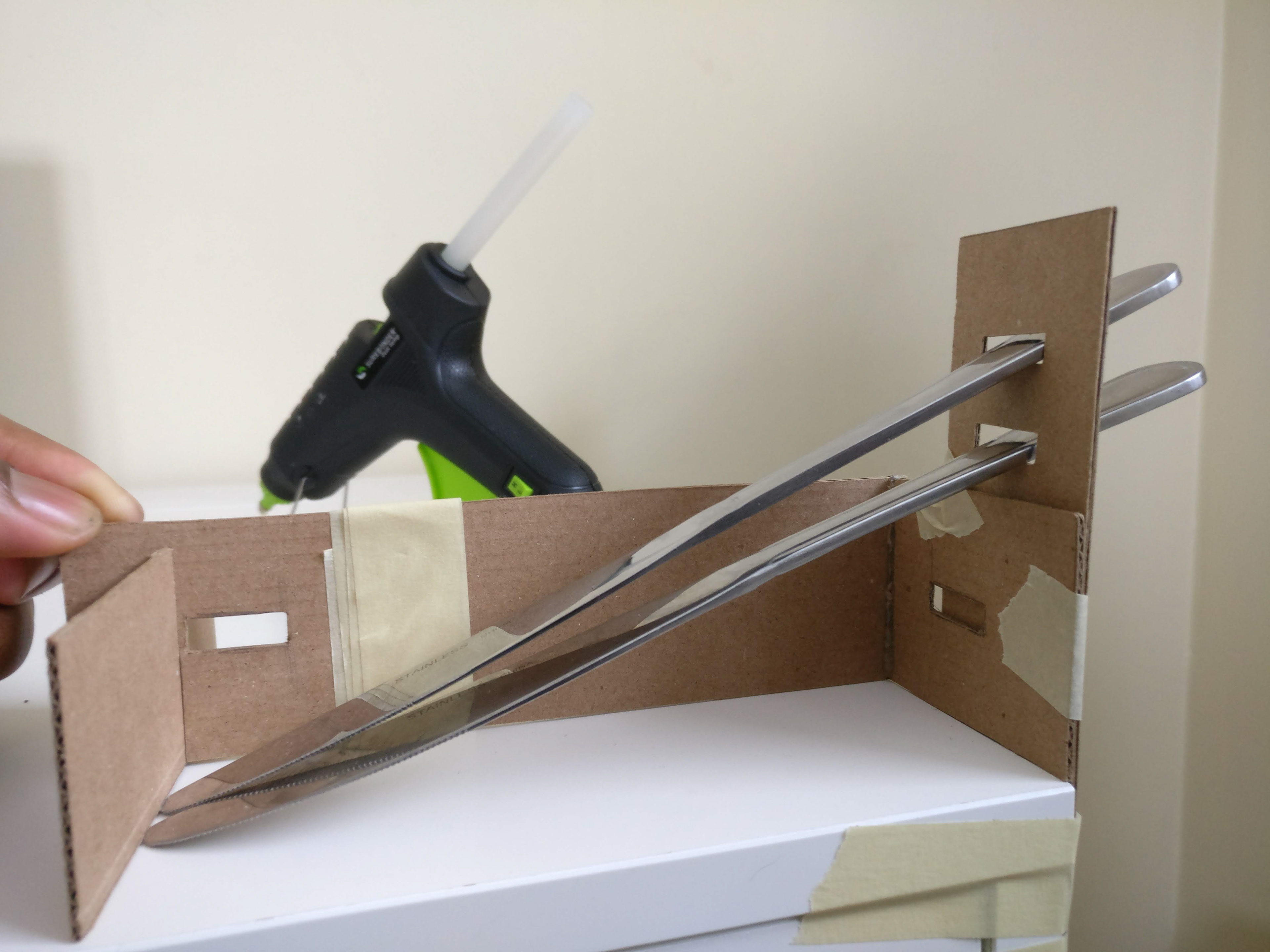
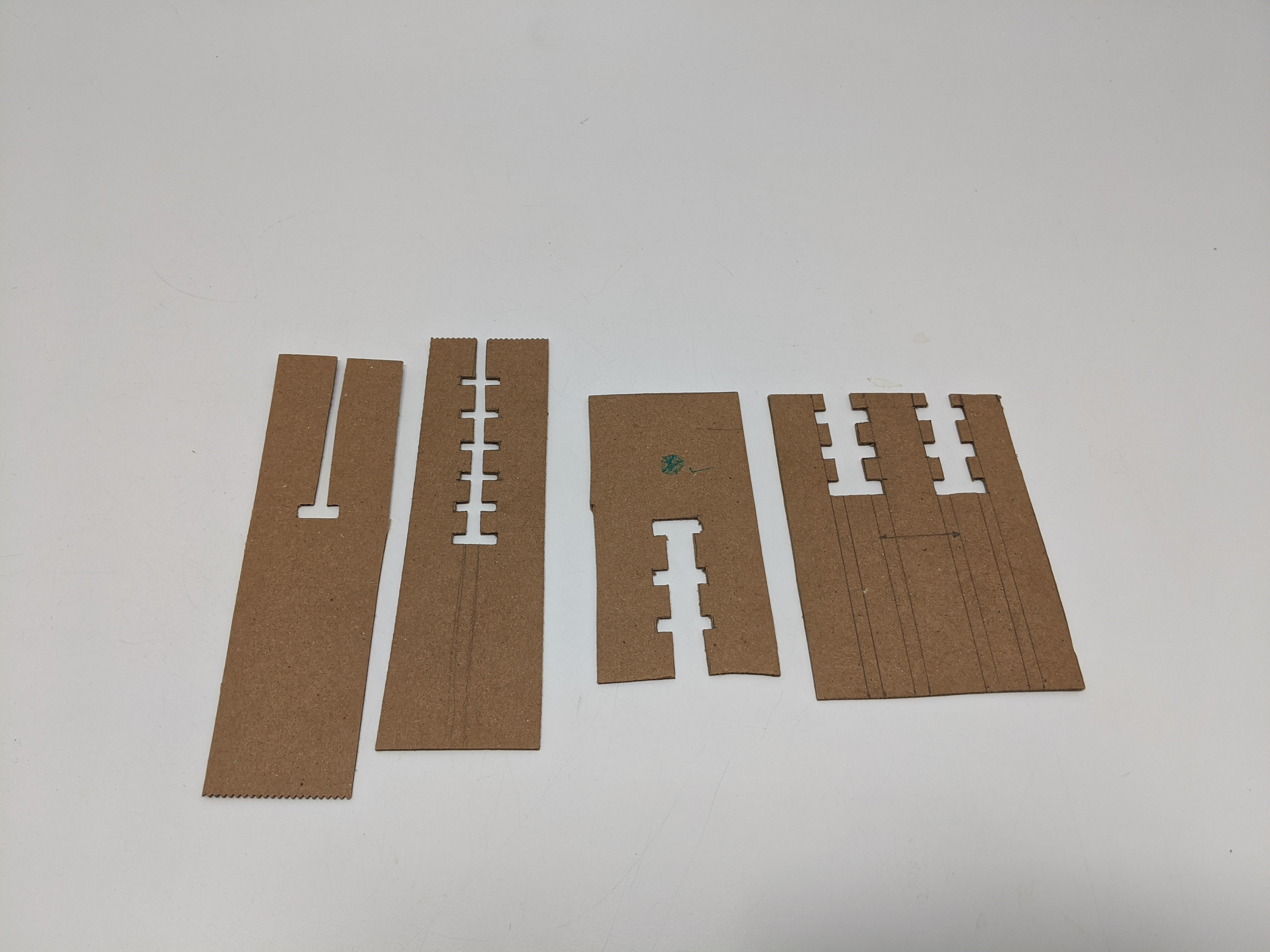
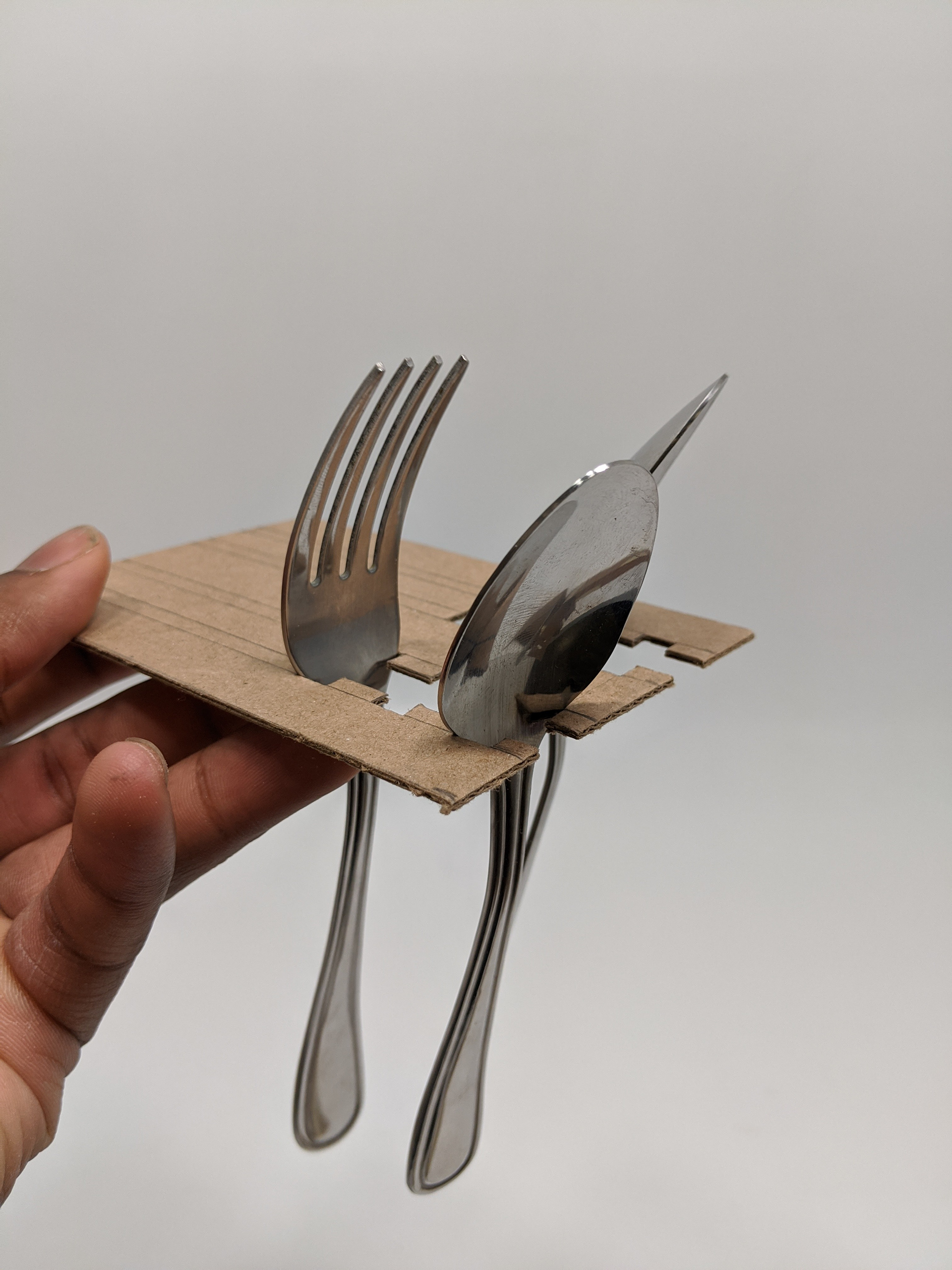
The chosen holding style
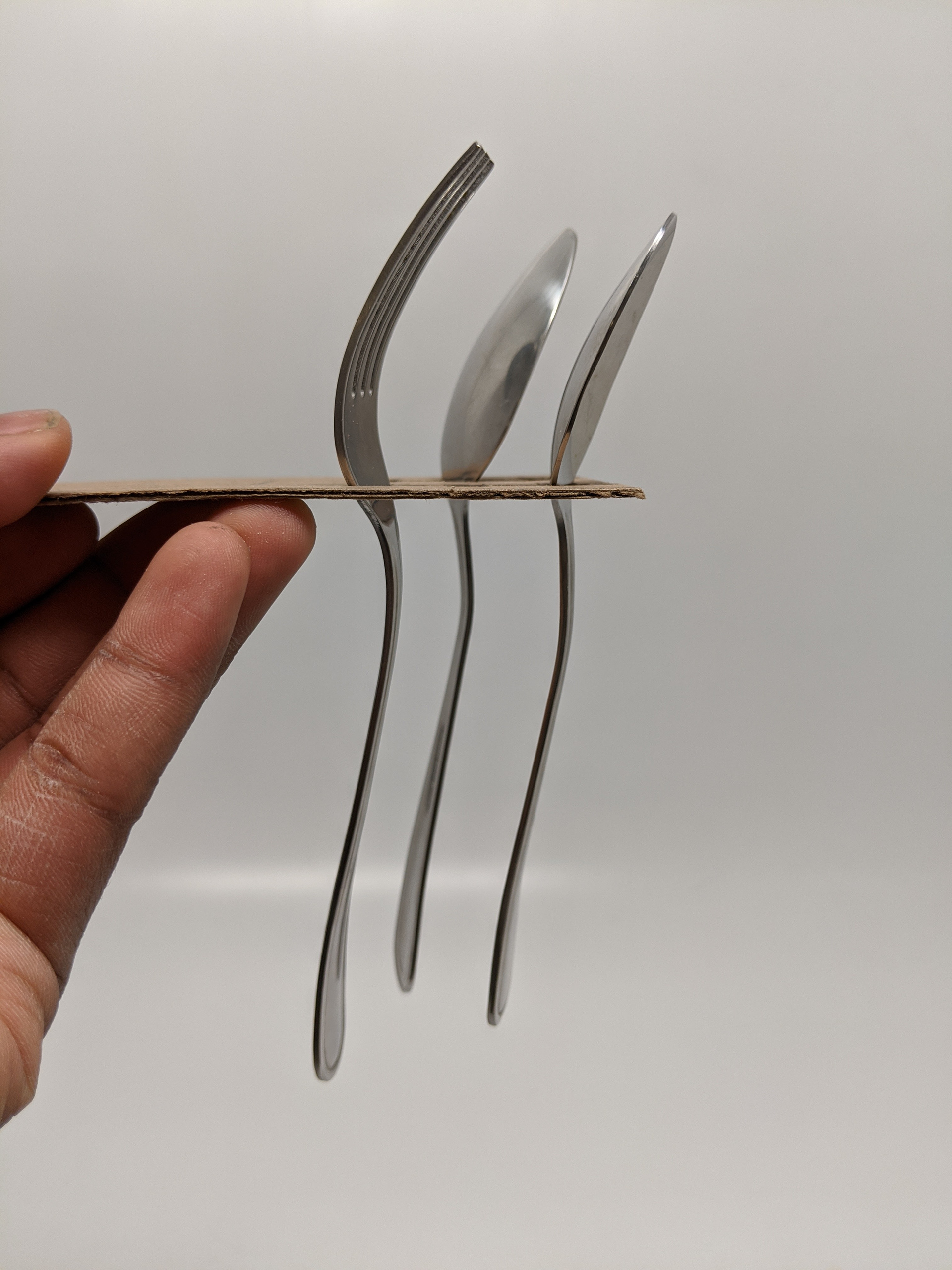
The concepts
Three concepts, combining the strengths of various ideas, were generated and sketched out to communicate the essence of the concepts.
After these were evaluated, the best features of each concept were amalgamated into a final concept, which was to be modelled.
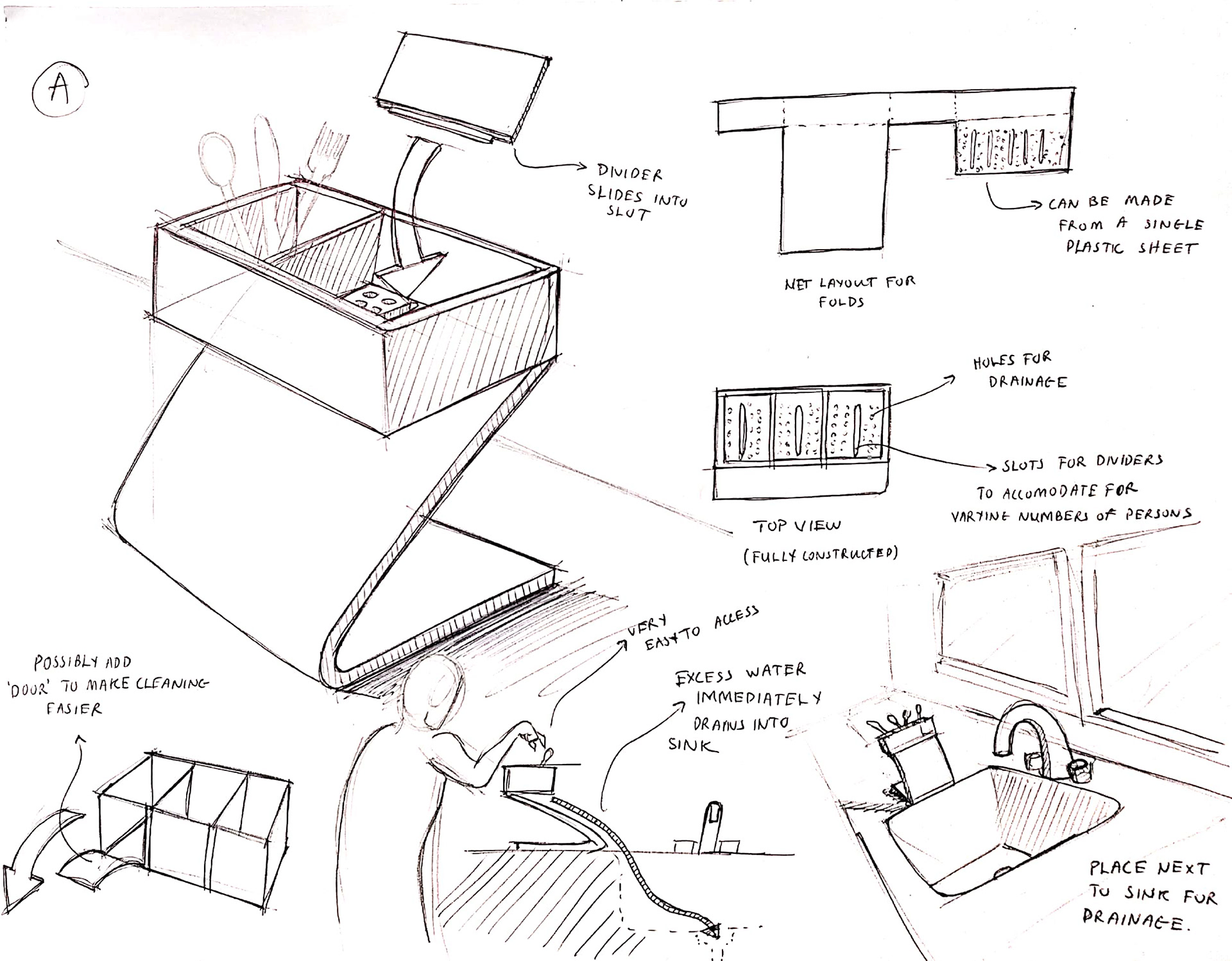
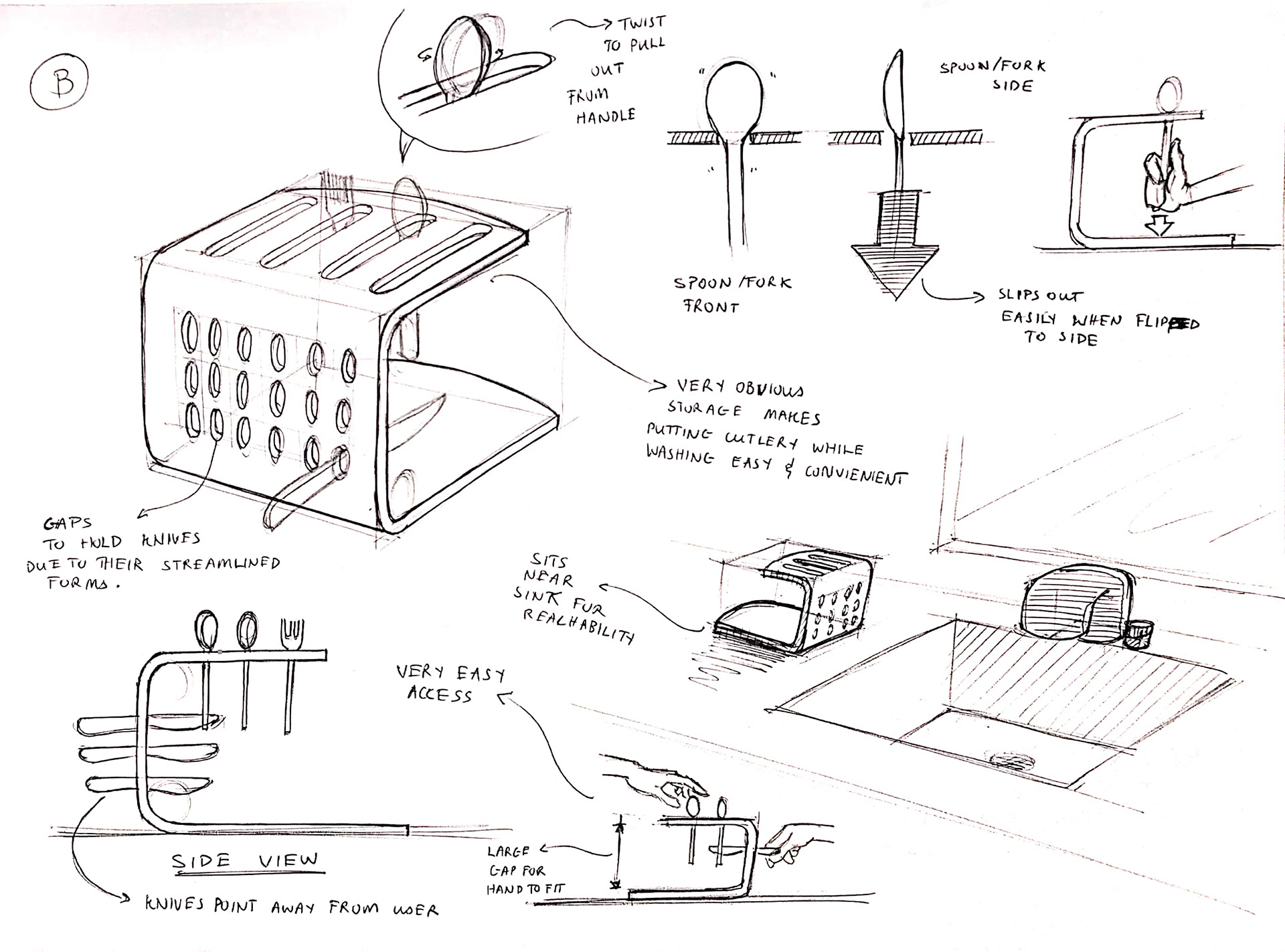
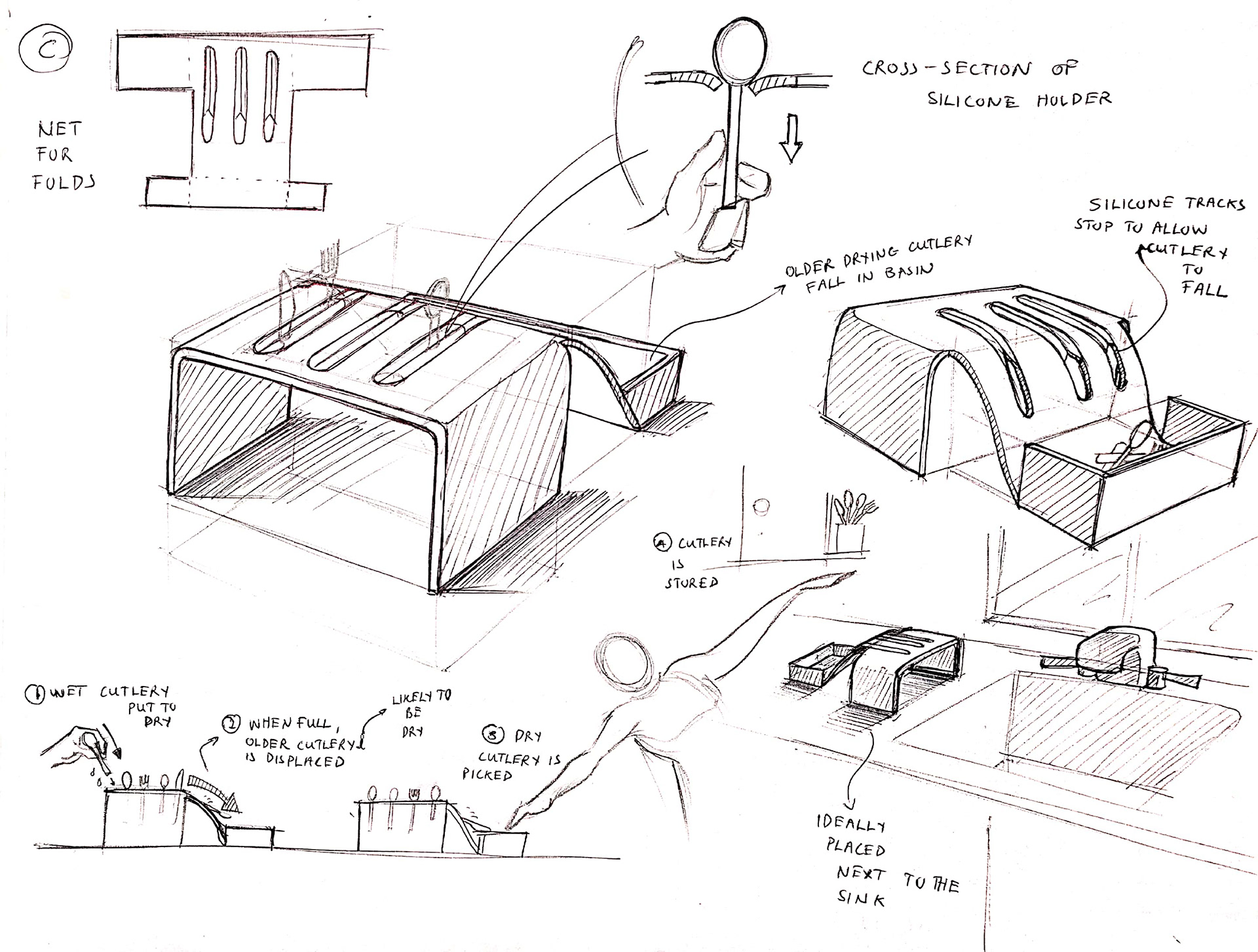
Model making
The appearance model was made out of an aluminium sheet with the slots milled out, then it was bent into shape.
The weighted block was made out of a scrap hardwood piece and sanded to shape.
The detachable box was made out of plywood and joined together with wood glue.
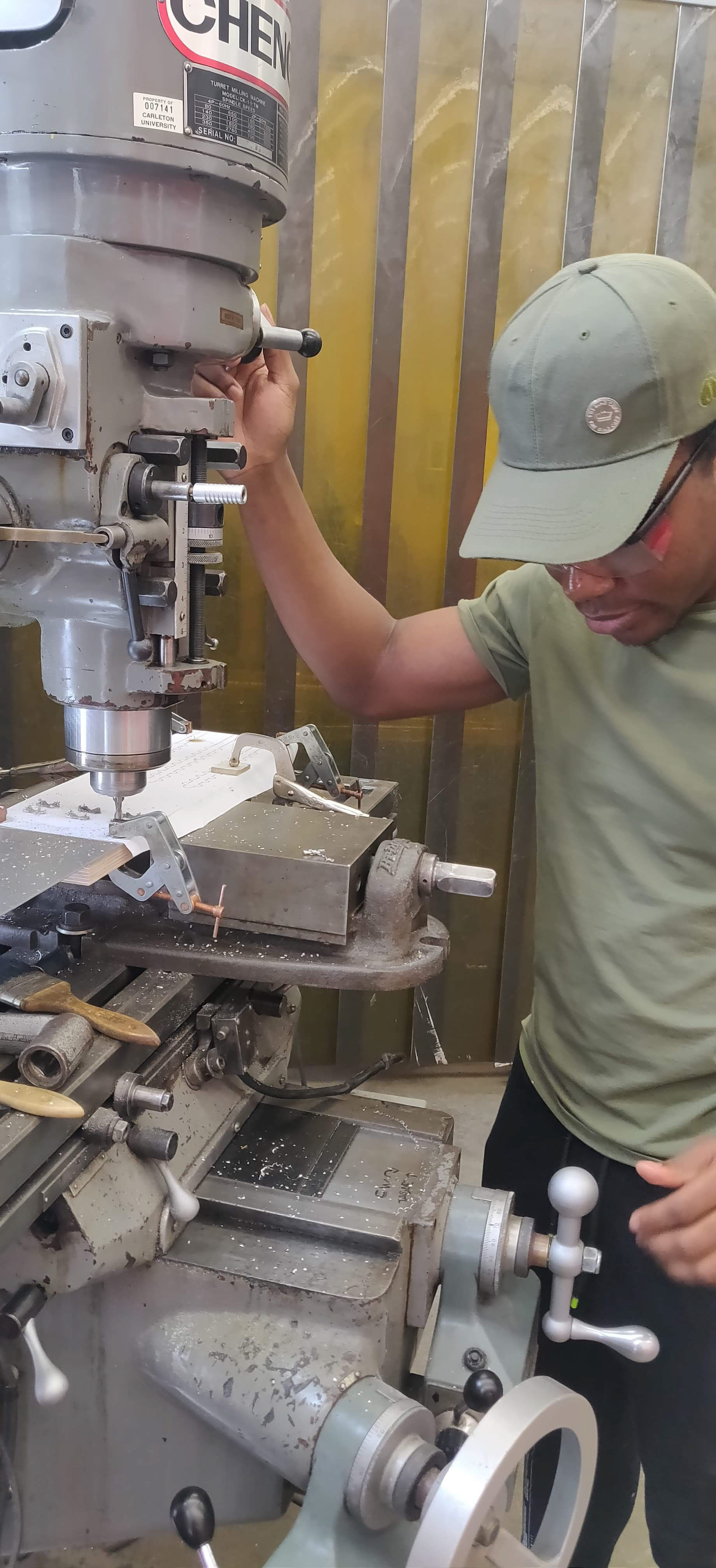
Milling out the slots using a 1:1 scale template

Filing off the burrs. This could have been avoided by using laser-cut acrylic and painting it to look metallic
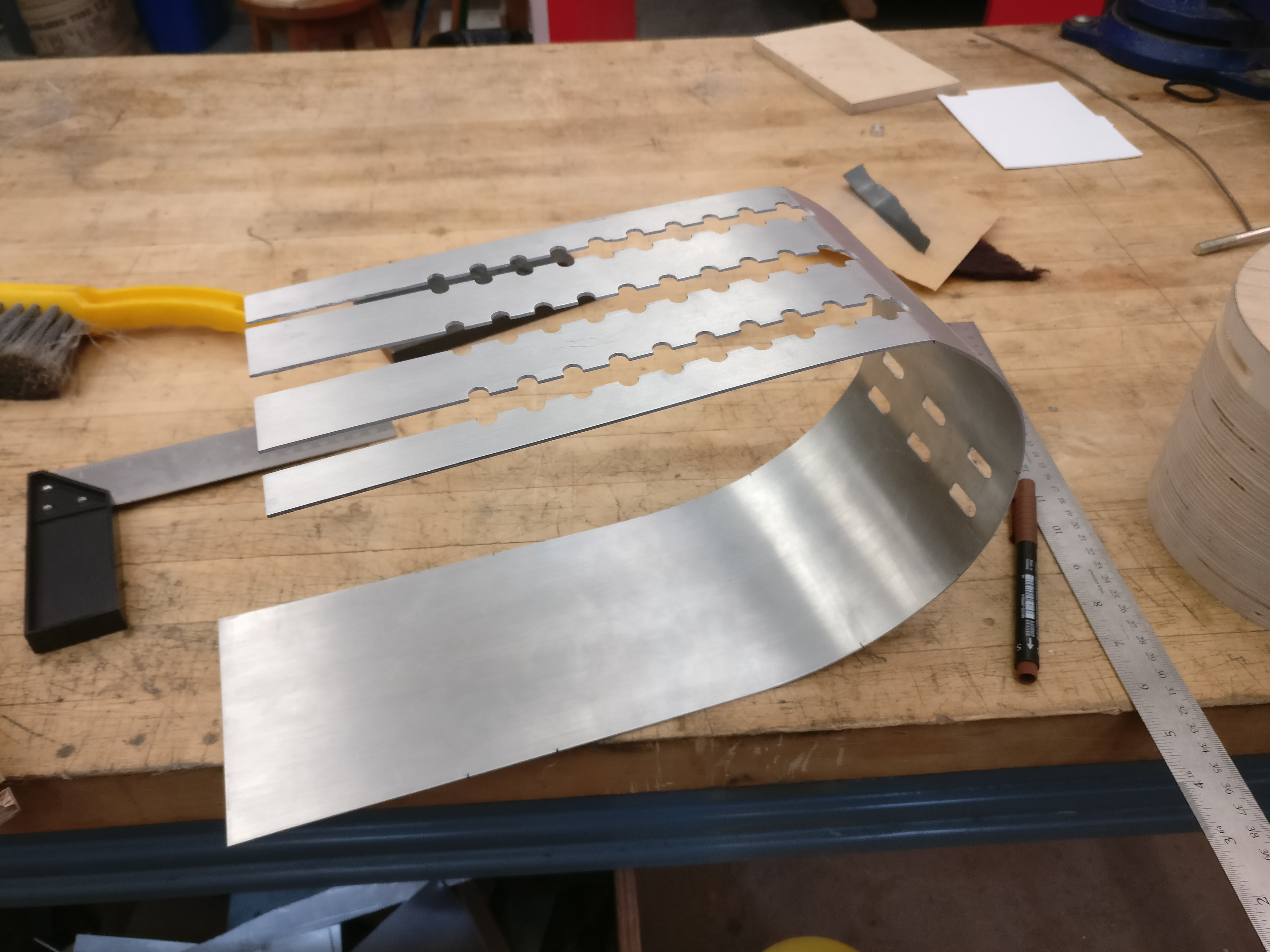
Large bend was made first on a jig
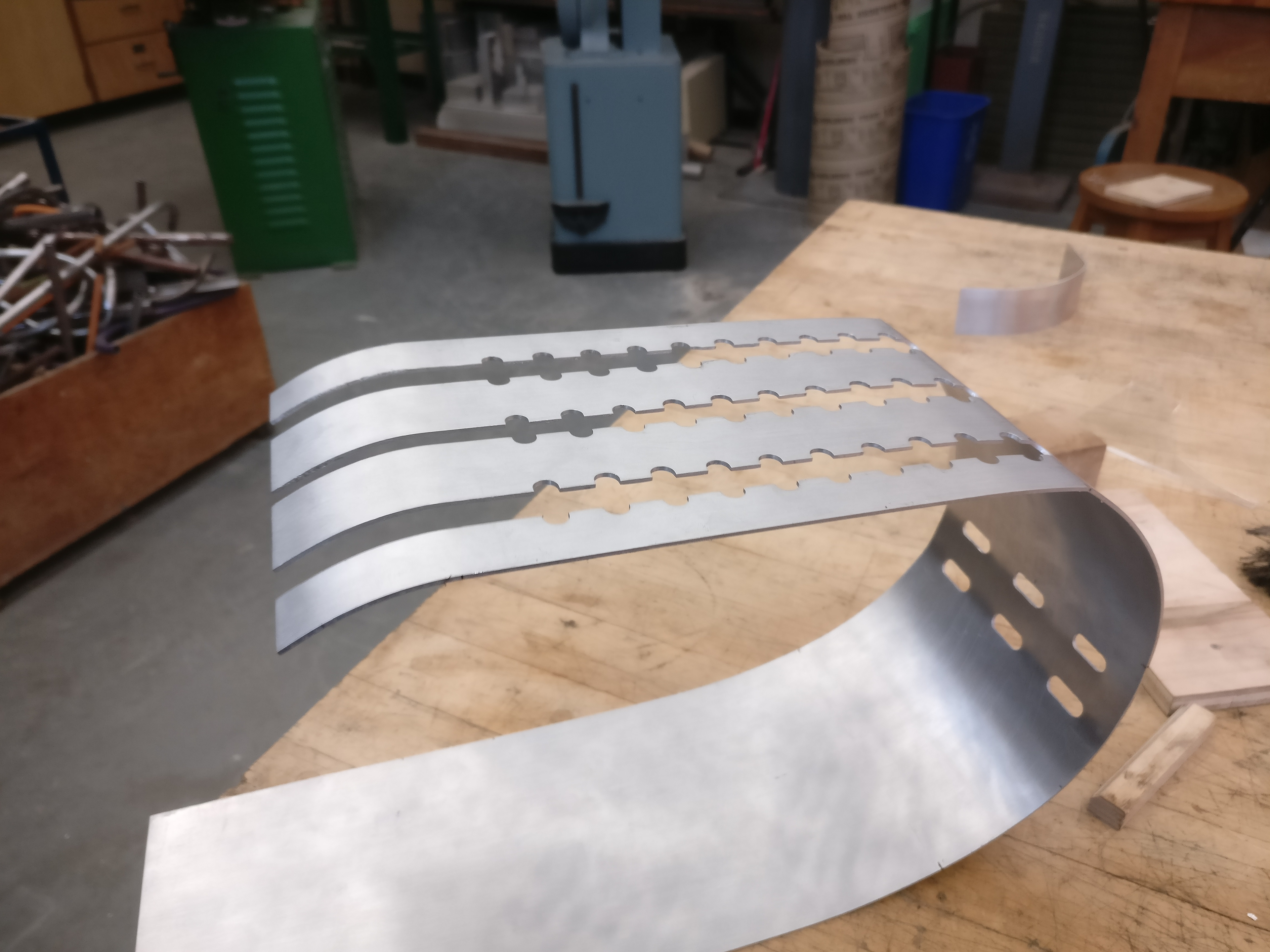
Smaller curve added at the slots' end
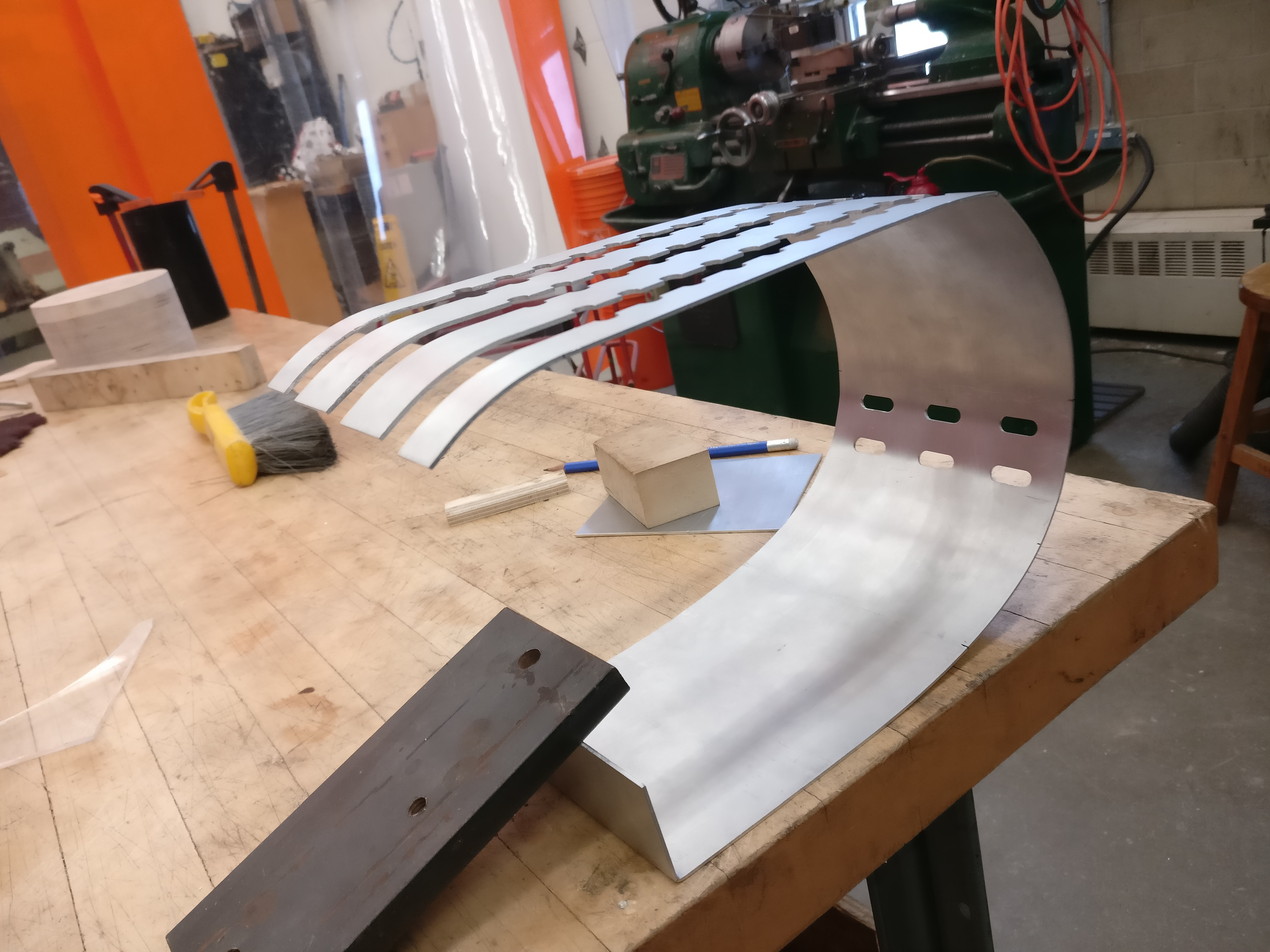
Final 90 degree bend was made
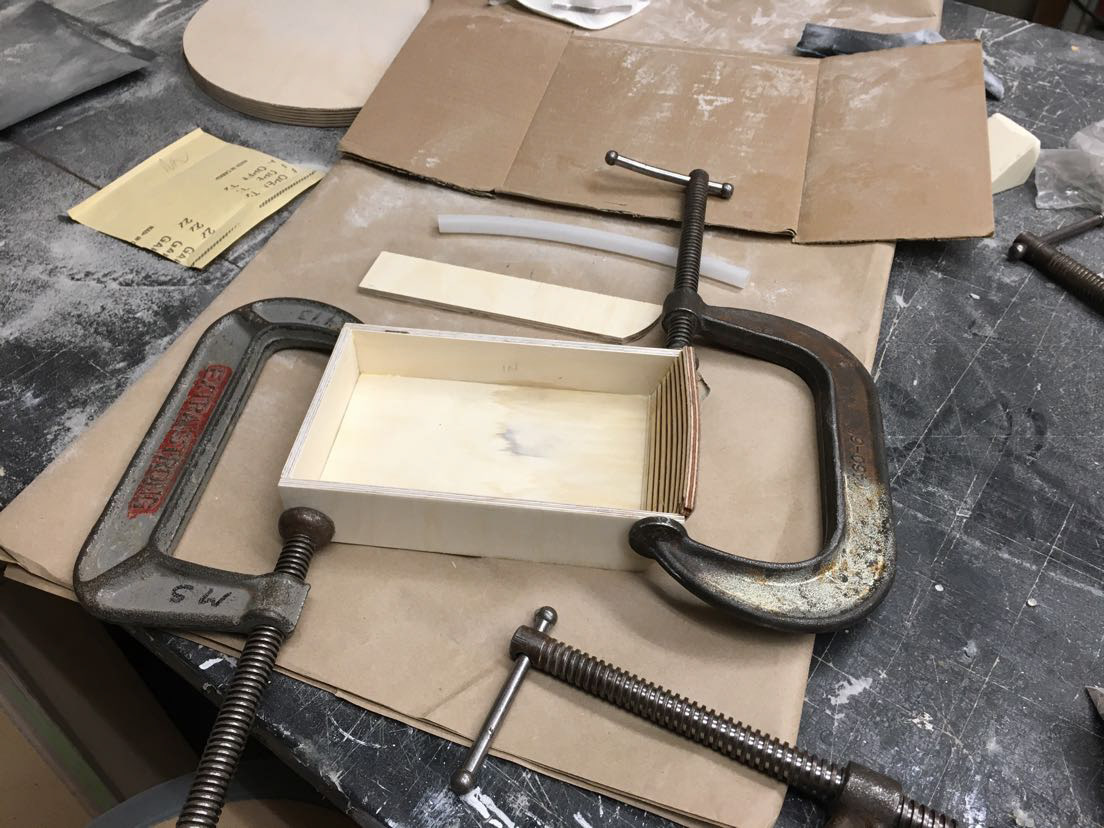
Clamping the box parts together
Final Model
In a house with multiple residents, it is difficult to identify and organize personal cutlery in the drainer.
This product fixes that, along with other problems, by elevating and separating cutlery into rows, allowing users to easily identify and access them.
-The final model was able to store up to 30 forks and spoons and 6 butter knives.
-It separates the items into 3 rows, one for each individual. The cutlery are also very easy to see and access
-Features a detachable bowl to easily take items back to drawers or permanent storage areas.
-The materials are easy to clean, and resistant to water damage as the wood would have a water resistant finish.
Use Cycle
Shows how the product is intended to be used.
Use in Environment
How the product fixes the problems.
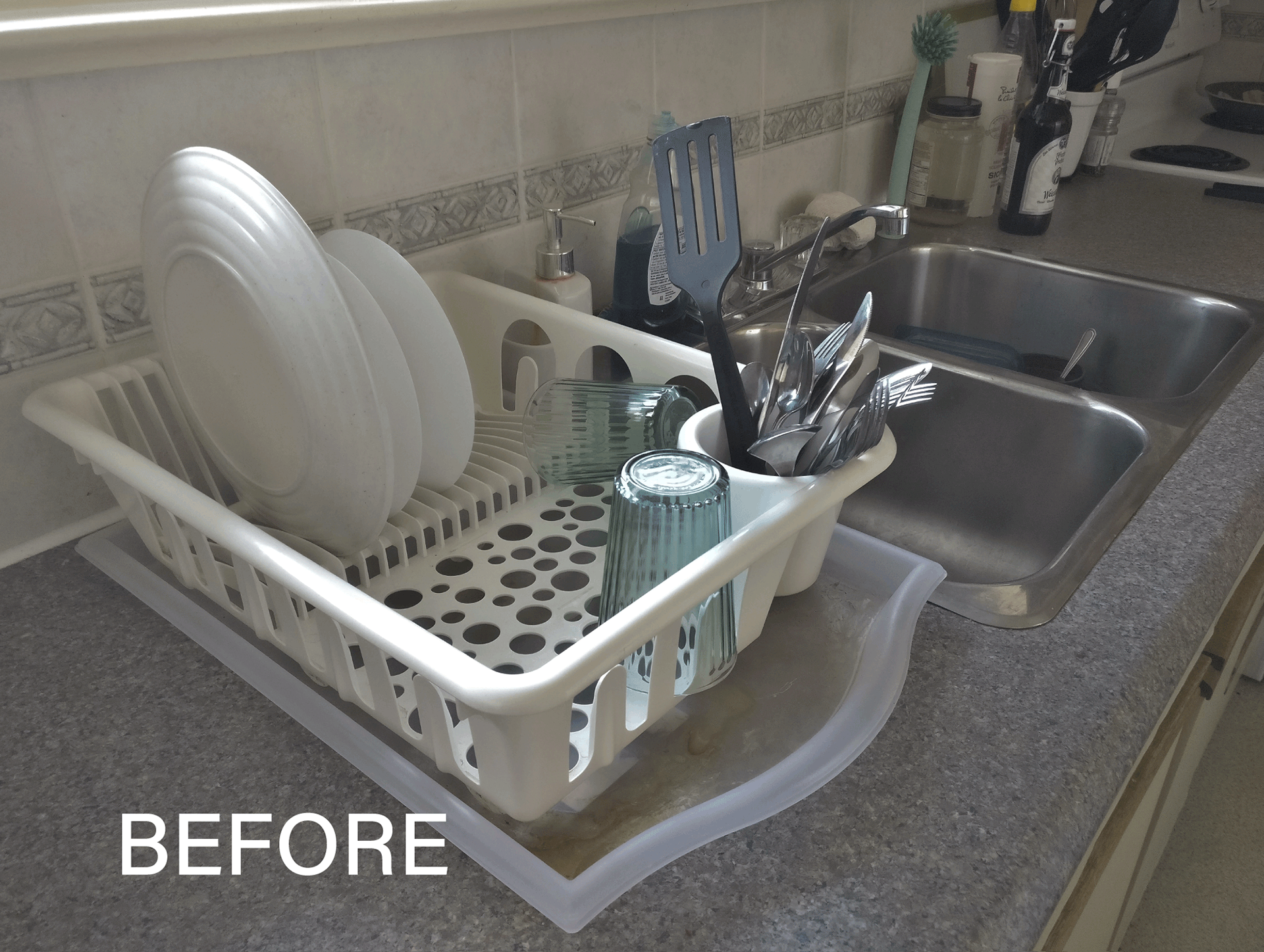
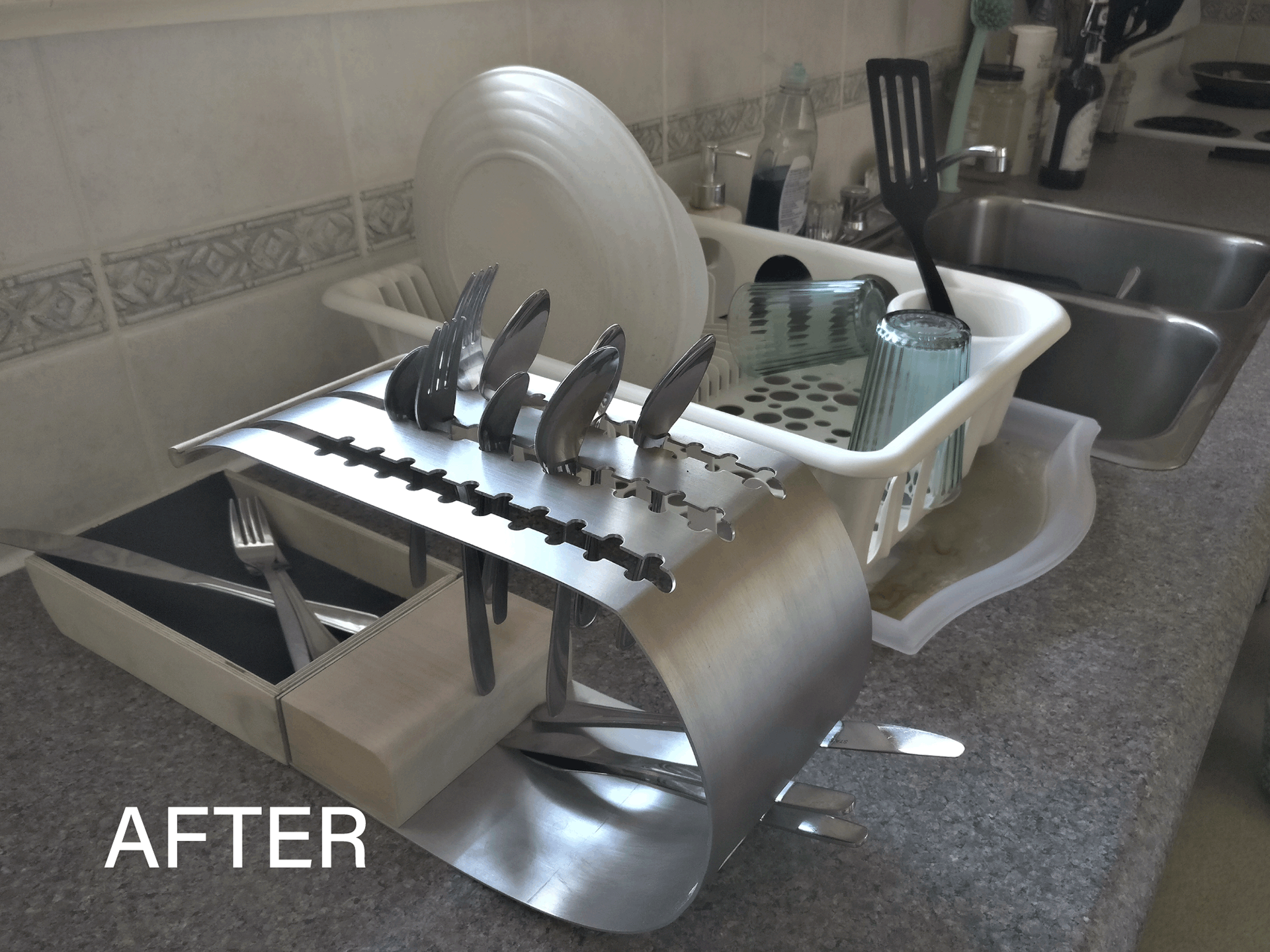
improvements
A flaw of the design is that the dripping of the water from the cutlery and the mess it could make was overlooked, making the product more like a cutlery holder rather than a drainer. This could have been avoided by performing proper tests with a higher fidelity model which would reveal this flaw in time for it to be fixed.


